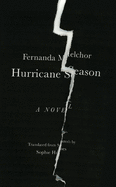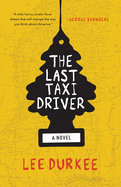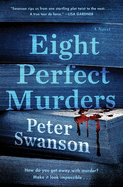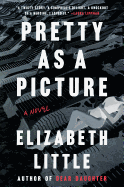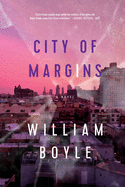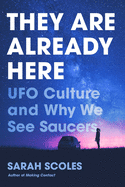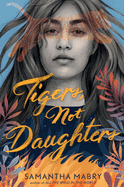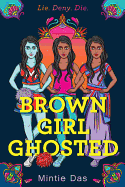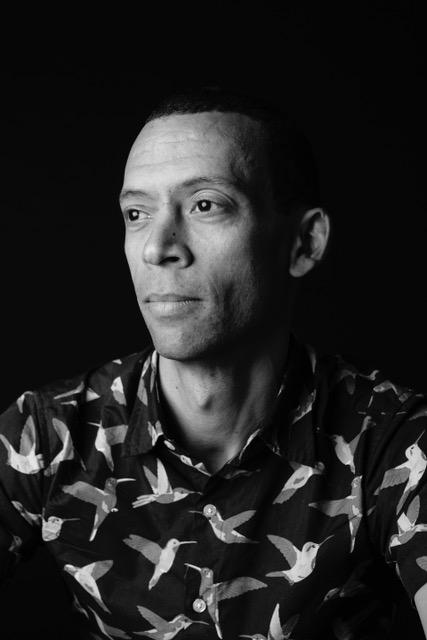 |
| (photo: Crystal Liepa) |
Kawai Strong Washburn was born and raised on the Hamakua coast of Hawai'i. His short fiction has appeared in McSweeney's, Electric Literature and The Best American Nonrequired Reading, among others. He has received scholarships from the Tin House and Bread Loaf writers' workshops and has worked in software and as a climate policy advocate. He lives in Minnesota with his wife and daughters. Sharks in the Time of Saviors (MCD/Farrar, Straus & Giroux, March 3, 2020) is his first novel.
How does a story with multiple protagonists come to be?
I think a lot of writers gravitate toward what they love, and I love books in which you get to think into multiple consciousnesses. You get to expand your initial impressions. And it's possible to do this with a third-person perspective, but it can feel less rich, or it can move me less that way.
I knew early on that it was going to be about a family, and I really wanted to dive into each person and challenge myself to create characters that would have perspectives that were nothing like mine. With all the different family dynamics involved, pushed in different directions, each has their own blind spots and their desires and their failures. It was a challenge, but one I wanted to try, because I felt it made for a richer experience as a reader, and so I wanted that as a writer as well.
How do you handle the storytelling challenge of shifting points of view?
For me it is very hard, partly because none of them are based on me. I read a section a few years ago, that was excerpted in Electric Literature, in which Dean hits his mother. Somebody came up to me after I read that and said, oh, you're so brave to write about having hit your mother! And I said, this is not my life! None of these characters are me, or my family. They're not based on anyone I know. With Dean, the challenge was to write a character who would have tried to beat me up in high school. If I encountered him in most walks of life, he would feel like an antagonist. Is there a way that I can write this character and understand what makes him tick with a sense of empathy but without letting him off the hook for his faults? Create this whole character who has problems and stupidities and issues with anger management, but in a way that challenges me to think about how he might justify his feelings to himself.
I love language. I really love it when writers take risks with language and render a new way of speaking and thinking that I haven't experienced before. It takes me to a new place. I wanted to do that with the characters as well, and so in addition to creating these different psyches, I then had to create a different language for each, so that they each felt like a different consciousness. There were so many revisions to get sentences right. Given a thought that might be the same for Kaui and Dean, how would that feeling play itself out in different sentences? What would their voices feel like in their head? It was a ton of work. It was awful. I would never do it again. If I'd known at the time what a challenge I was setting for myself, I probably would have been like, no. But once I was in there, that was the work that was before me.
So this is not autobiographical.
I share very little with the characters. All the locations where all the scenes happen are places I have been. I could draw on my own experiences in those places to describe the smells and the ambient details. And there are times when I indirectly brought in observations that I had, as someone from Hawai'i moving [to the mainland], the cultural dissonance. Observationally I drew upon that, but there are almost no experiences in the book that I drew from my personal life directly. Having lived and grown up in Honaka'a, I experienced the place long enough that I had an innate sense of the culture and how most people think and feel and act.
I wrote a first novel that will never see the light of day. I think that that's where I got the classically autobiographical elements out. In this book, in any moment when I felt like a character was doing something that I would have done, or when I winced at their decision-making or their biases or their thoughts or feelings because those were not thoughts or feelings I would have, or they made me uncomfortable, I would push toward those things and away from things that felt like me, in a conscious attempt to move away from the autobiographical.
What aspects of the book required research?
When you come from what is traditionally an underrepresented perspective and an underrepresented place, you carry this burden of authenticity that some writers don't have to grapple with as much. When I wrote earlier in my career, I didn't write about Hawai'i, partly because I was scared that it would be autobiographical. Or there was an expectation that because I'm from Hawai'i I should write about Hawai'i. But also I was scared, because there wasn't a lot of literature out there based in Hawai'i, that I would fail to present the sort of universal feeling or experience of people from the island.
I spent a lot of time doing research into the mythology and native Hawai'ian religion that I had passing knowledge of, being born and raised there. You remember those things, but not fully or accurately enough to be a cultural ambassador. So I went back and spent a lot of time researching Hawai'ian culture and folklore and knowledge and history, because I had just enough incomplete knowledge to be dangerous if I just wrote from what I knew.
Do you have a favorite character?
I do. I don't know if you're supposed to say that, it's like a kid. But I really enjoyed Kaui.
I see the novel as a kind of metaphor for the Big Man theory of history. All the great inventions, the important moments in the collective history of this country, are almost always filtered through the lens of a particular actor, usually a man. That's what Nainoa came to represent to me, the Big Man theory of the events early in their lives. Particularly Malia is really invested in the idea of Nainoa as some sort of savior. He's going to be this special, important Big Man. As I was working through revisions, Kaui became the answer to that. I believe that most positive change that has happened in the world has come about because of collective action and a lot of small, simple sacrifices in ways that no one ever sees or celebrates. The right person happens to be in the right place at the right time and gets on the apex of that groundswell, and they're the one that gets the credit for it. Kaui embodied an answer to that. She's back in Hawai'i and she has to learn to accept that she's made mistakes, but the way forward is to reconnect with her family and the land. She has to give up a sense of complete individuality, something that Nainoa was reaching for incorrectly, that was placed on him as a burden. He's supposed to be something so big that he can fix everything. And to me, Kaui's reckoning in the latter third of the book is a sort of answer, that that isn't the way the world works.
I really like the idea of having her be an engineer, having her build things with her hands and be a very physically grounded character, as a woman. I don't think women necessarily get rendered in literature and in pop culture in a way that I kept wishing they would. I tried to not direct my gaze too much at the body. The way some male writers talk about female bodies can be really creepy and gross. When I was writing Kaui, I wanted her to not be some idealized femme fatale. She was living in a body that was strong and that she was comfortable in. She didn't have anything to do with beauty or the standard female values that are upheld in a lot of pop culture. She was more driven by friction and velocity and fear, and a lot of things that don't get associated with female characters. It became a lot of fun and that's one of the reasons I enjoy her as a character.
What are you working on next?
I've started another novel. It has to do with climate change, has some elements of reincarnation, it spans around 200 years, there's a band of female pirates: it's cool. I'm enjoying it. It tries to blend a couple of genres, and celebrate both the internality of the human experience and the things I love about plot. --Julia Kastner
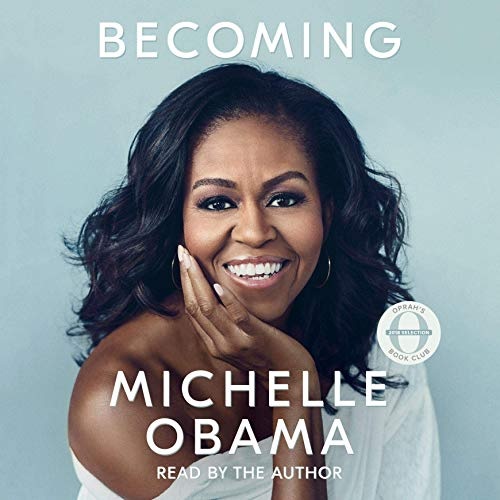 When Michelle Obama's Becoming was published, I was short on reading time, so Michelle and I rode Bay Area BART twice a day. Listening to her was like chatting over tea. When a gentleman offered me his seat one morning, I said, "No, thanks; I'm fine here with Michelle Obama." He smiled; perhaps he thought I was delusional, but I prefer to think he appreciated audiobooks, too. Hearing authors reading their own work made commuting less lonely--maybe I didn't have a friend to travel with, but I had Ross Gay sharing his Book of Delights with me! Listening to Benjamin Dreyer reading his Dreyer's English: An Utterly Correct Guide to Clarity and Style, I hoped somebody might ask why I was laughing. What a "delight" (thank you, Ross!) to escape from the dismal morning news for a debate over the serial comma.
When Michelle Obama's Becoming was published, I was short on reading time, so Michelle and I rode Bay Area BART twice a day. Listening to her was like chatting over tea. When a gentleman offered me his seat one morning, I said, "No, thanks; I'm fine here with Michelle Obama." He smiled; perhaps he thought I was delusional, but I prefer to think he appreciated audiobooks, too. Hearing authors reading their own work made commuting less lonely--maybe I didn't have a friend to travel with, but I had Ross Gay sharing his Book of Delights with me! Listening to Benjamin Dreyer reading his Dreyer's English: An Utterly Correct Guide to Clarity and Style, I hoped somebody might ask why I was laughing. What a "delight" (thank you, Ross!) to escape from the dismal morning news for a debate over the serial comma.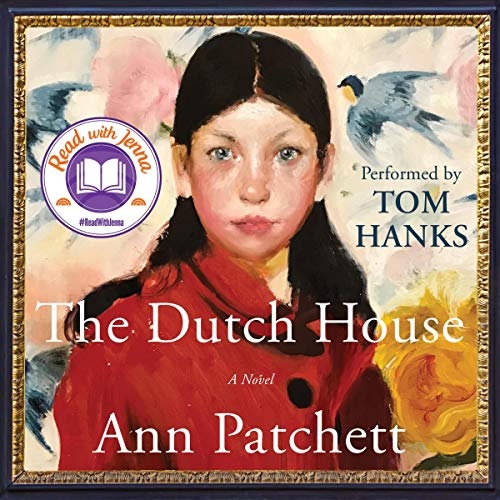 Faced with moving a household, I knew audiobooks would relieve the drudgery. Tom Hanks reading Ann Patchett's The Dutch House is magical, even after having read the hard copy. Two novels that put my complaints in perspective were William Kent Krueger's Depression-era This Tender Land, read by Scott Brick; and Alice Hoffman's Holocaust-set The World that We Knew, narrated by Judith Light. For comic relief, Mo Rocca reading his Mobituaries guaranteed laughs to ease the novel's heartbreak.
Faced with moving a household, I knew audiobooks would relieve the drudgery. Tom Hanks reading Ann Patchett's The Dutch House is magical, even after having read the hard copy. Two novels that put my complaints in perspective were William Kent Krueger's Depression-era This Tender Land, read by Scott Brick; and Alice Hoffman's Holocaust-set The World that We Knew, narrated by Judith Light. For comic relief, Mo Rocca reading his Mobituaries guaranteed laughs to ease the novel's heartbreak.


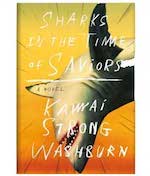


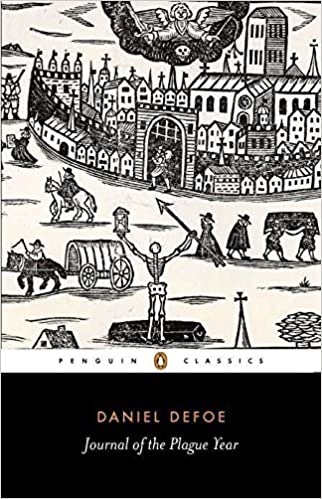 Over the course of 18 months between 1665 and 1666, the Great Plague of London killed roughly 100,000 people, nearly a quarter of the city's population. Daniel Defoe, later author of Robinson Crusoe, was five years old at the time. In 1722, having established himself as a novelist, Defoe published A Journal of the Plague Year under the name "H.F." Defoe's uncle, Henry Foe, like the protagonist in A Journal of the Plague Year, worked as a saddler in the Whitechapel district of East London during the Great Plague. Critics consider Defoe's uncle's records the primary source for A Journal of the Plague Year, with casualty tables and other anecdotes later compiled through Defoe's research. Whether Defoe is deemed more author or editor for A Journal of the Plague Year, none of the tales within--grim accounts of a city and individuals grappling with unimaginable tragedy--have ever been debunked. A Journal of the Plague Year was last published in 2003 by Penguin Classics (9780140437850). --
Over the course of 18 months between 1665 and 1666, the Great Plague of London killed roughly 100,000 people, nearly a quarter of the city's population. Daniel Defoe, later author of Robinson Crusoe, was five years old at the time. In 1722, having established himself as a novelist, Defoe published A Journal of the Plague Year under the name "H.F." Defoe's uncle, Henry Foe, like the protagonist in A Journal of the Plague Year, worked as a saddler in the Whitechapel district of East London during the Great Plague. Critics consider Defoe's uncle's records the primary source for A Journal of the Plague Year, with casualty tables and other anecdotes later compiled through Defoe's research. Whether Defoe is deemed more author or editor for A Journal of the Plague Year, none of the tales within--grim accounts of a city and individuals grappling with unimaginable tragedy--have ever been debunked. A Journal of the Plague Year was last published in 2003 by Penguin Classics (9780140437850). --